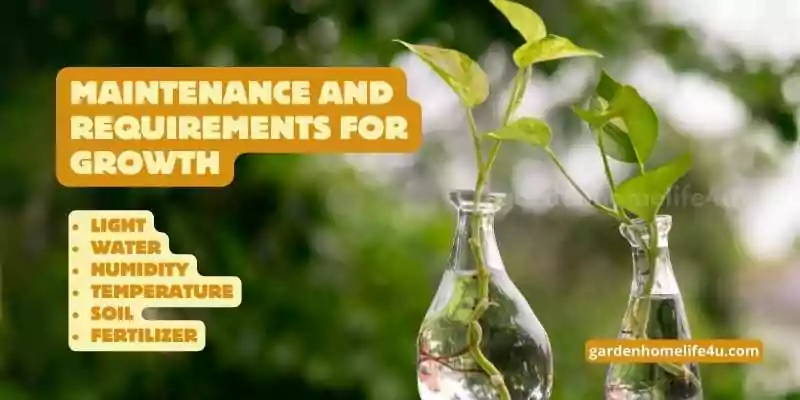Within the sanctuary of indoor spaces, where the allure of nature meets the comfort of home, there exists a charming houseplant that graces living rooms, kitchens, and offices alike—the Devil’s Ivy, unlock the secrets to nurturing this resilient and enchanting plant, ensuring it flourishes with lush greenery in the heart of your living space.
Also known as Epipremnum aureum or Pothos, Devil’s Ivy has captured the hearts of plant enthusiasts worldwide, not only for its striking beauty but also for its ease of care. In this guide, we shall explore some ideas on maintaining Devil’s Ivy indoors, uncovering the key elements that contribute to its health, vibrancy, and vitality.
Our focus lies in providing you with essential insights and expert tips to create the ideal environment for your Devil’s Ivy to thrive. From understanding its water and light requirements to identifying common issues and offering solutions, we aim to empower you with the knowledge to care for your plant with confidence.
Whether you’re a seasoned plant enthusiast or a newcomer to indoor gardening, “Thriving Devil’s Ivy Indoors” offers practical advice for nurturing Devil’s Ivy to its fullest potential.
Moreover, we recognize that each indoor space is unique, with varying conditions that impact plant health. As such, we offer adaptable tips and insights to cater to different environments, ensuring your Devil’s Ivy thrives regardless of your home’s specific characteristics.
So, if you’re ready to transform your living spaces into lush indoor gardens and embrace the magic of Devil’s Ivy, join us on this journey of thriving indoors. Unlock the secrets to nurturing this captivating houseplant, and discover the joys of creating a green oasis within your home.
Why Devil’s Ivy INdoors?

If you are someone who has a hectic schedule, hundreds of tasks to attend to, and the least amount of time to spare on plants but secretly wishes to have one at their home. Then, my friend, you are at the best stop to get your solution.
Let me tell you that once you set sail on this journey, there’s no coming back. Planting and pampering plants are such a pleasure that no one neglects their plants once they have started experiencing the peace that comes with it.
Planting and Pampering are obsessive. It comes from a very protective place with love.
However, many of you may not have the opportunity or may not be able to afford some time to spare on their plants but still want them.
The solution to this is keeping low-care plants at your residence. Indoor plants refresh and give life to your interior.
They are more so a good friend that takes care of the air around you, purifies it, and nourishes your skin.
We brought you the best indoor plant to have in your home sweet home. This plant is the one that “thrives on neglect”, which means it requires the least care and grows beautifully and aimlessly in random directions.
The plant is Devil’s Ivy. Its scientific name is Epipremnumaureum and also known by the name “pothos”. You might be wondering why this plant has a “devil” in its name. Well, this is due to its inability to die, and its invasive nature like Parthenium. It propagates fast but is extremely hard to kill.
Maintenance and Requirements for Growth:

Before getting into propagation maintenance, let’s see what are the basic requirements of a devil’s ivy to grow healthily in an environment.
- Light:
Place the devil’s ivy in a bright spot without direct sunlight so that it stays bright and green.
They are acclimatized to low light conditions and artificial light too. They do not demand strict weather but are flexible; this makes them ideal for colder climates – the usual in the United Kingdom.
- Water:
Watering always goes with photoperiodism (the duration and amount of intensity of light received by the plant). They need water just once a week but this changes to twice a month in winters. Ideally, the soil should be moist and the surface should be dry in between watering.
- Humidity:
For a devil’s Ivy, low to moderate humidity is fine. But it grows extremely well in very high humidity. Therefore, humidity is essential for its growth. Hydrate your plant by regularly misting it with a spray bottle or a humidifier.
- Temperature:
The ideal temperature range for the optimal growth of the Devil’s Ivy is between 15-29 *C or 60-85*F. Temperatures below this range show damaging effects on the plant and ultimately lead to its death.
- Soil:
One of the things this plant can’t tolerate is water-filled soil. Get a well-draining pot for your little friend to keep it healthy and strong.
- Fertilizer:
In the warmest seasons, the devil’s ivy is in its peak growth stage, so make sure you give it food to grow. Give it a feed with some liquid fertilizer once or twice a month. During the winter season, there is little to no need to feed the plant. Devil’s ivy does grow in the tropics, so in the cooler months, just give it a spray with some lukewarm water but no food.
- Location:
Pothos can be grown in a variety of locations, as a totem or a hanging, as a trailing plant, or on a moss pole. They look great on shelves, ceilings, balconies, welcome boards, etc.
Propagating Devil’s Ivy:

Getting a Devil’s Ivy is a one-time investment. Why buy them again when you can propagate them in your own house in just a couple of minutes? Interesting, right? Let’s see how you can propagate your invasive greens.
To propagate your devil’s ivy, you’ll need a couple of things (tools required). These are:
- A spray bottle with water (for misting)
- A glass of water
- Secateurs (also known as pruners or pruning shears)
- Plant clips
Step 1:
The first step in the propagation of a devil’s ivy is to wrap the vine around and clip them on. It’s a simple step; still, you need to make sure that you are not damaging the plant by wrapping and clipping it a bit too tight or overlooking this step completely.
Step 2:
The next step is trimming. It is because you would want to limit its never-ending growth or wish to give it a haircut for your guests. Either way, make sure to trim it down from below the node, in the internode region, preferably terminal regions.
Cutting from anywhere else will not be the best place for propagation because the meristems (the dividing cells which will form the new plant) are present only at specific locations in the plant.
Step 3:
The third step is propagation. Plant the trimmed node in the glass itself (after draining) or in different pots for hangings, and there you go. Mission propagation accomplished.
You can place the Devil’s Ivy in chic pots to cover your house with them. Give a tone and mood to your home by keeping them in different styled pots.
Follow these three easy steps, and you have your baby plant ready in a few hours.
Conclusion:
The scenarios of devil’s ivy cascading down a hanging pot or climbing up a totem pole are marvelous.
Try adopting a plant and tell us if you aren’t obsessed with planting and pampering.
Devil’s Ivy is a perfect indoor plant for beginners who are starting to propagate and maintain plants easily.
Devil’s ivy is a refreshing plant. It not only caters to your freshness needs but also serves adorning purposes. Ivy hangings are adorable to look at. It gives pleasure to the eyes and satisfaction to the soul.
We would warn you about something.
This is a reminder to reconsider having a devil’s ivy if you have pets. They are poisonous to dogs and cats and should be kept away from them at all times.
Keep Planting!
Keep Pampering!
Keep Propagating!
Sources to Get Your Devil’s Ivy Plant From:
- https://lazyflora.com/collections/indoor-plant-shop
- https://www.tonggardencentre.co.uk/
- https://www.rootsplants.co.uk/collections/ivy-plants
- https://www.patchplants.com/gb/en/plants/variegated-english-ivy-115/
- https://www.ashridgetrees.co.uk/climbing-plants/ivy
- https://www.jacksonsnurseries.co.uk/plants/plant-type/climbers/ivy-plants/
- https://www.thejoyofplants.co.uk/ivy-garden
- https://www.greencharm.co.uk/

